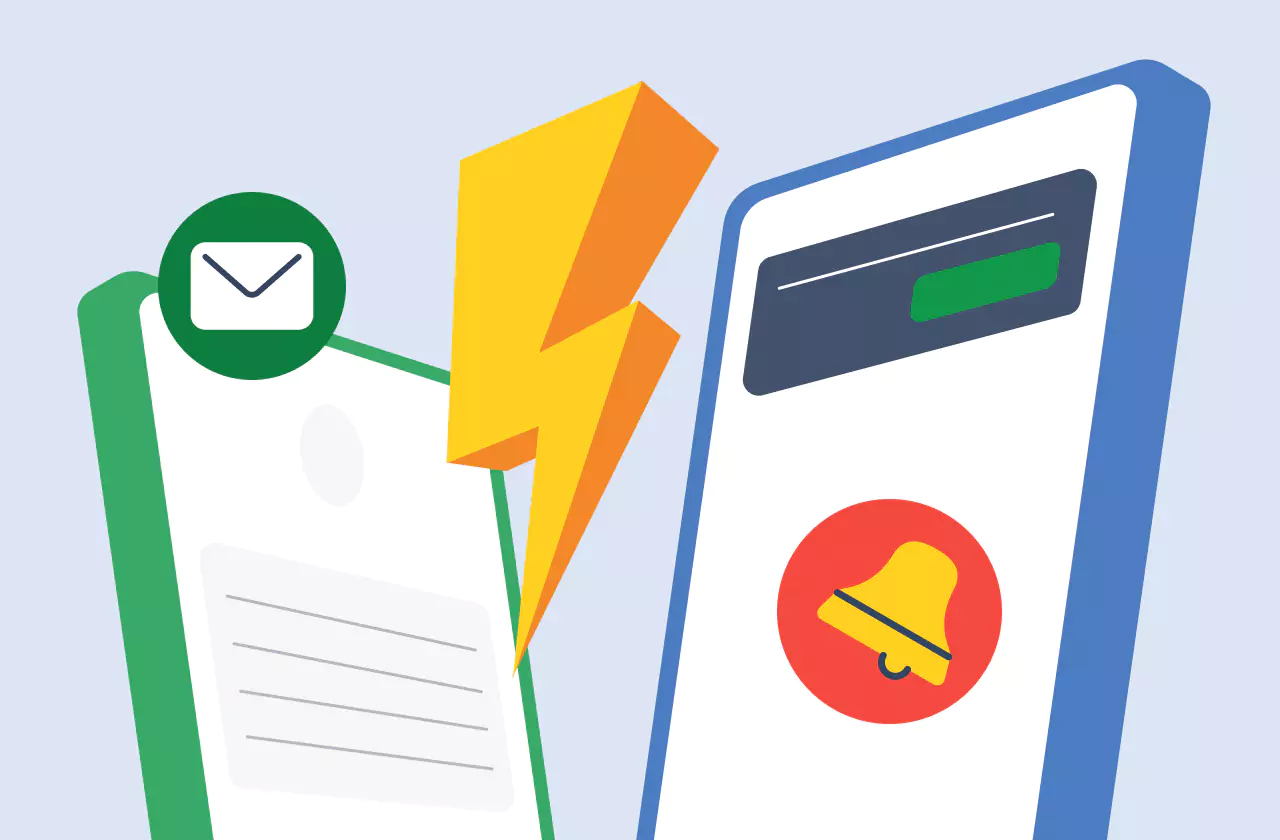Key Takeaways
- Smishing tries to get sensitive information from individuals using social engineering tactics like urgency, fear or curiosity
- Smishing attackers use a no. of tactics like sending deceptive text messages, giving enticing offers, including URLs to fraudulent websites etc.
- You can get smishing attacks in the form of delivery notifications, password resetting, message from CEOs, tax information messages etc.
- You should keep yourself updated and aware of patterns of such attacks in order to detect them when you encounter similar situations
- Always be mindful of sharing any personal information and try to use appropriate security systems on your devices to avoid such attacks
The State of Phish report 2024 by Proofpoint stated that 75% respondents mentioned the prevalence of smishing attacks.
In this article, we will explore what smishing is, its examples and most importantly, how you can protect yourself from falling victim to these scams.
Understanding Smishing
Smishing is a form of cyber-attack that utilizes SMS or text messages to trick individuals into divulging sensitive information or downloading malicious software. Smishing relies on social engineering tactics to create a sense of urgency, curiosity, or fear, prompting the recipient to take actions that benefit the cybercriminal.
You can also refer to our detailed article on SMS phishing on understand the concept better.
Smishing Tactics
Smishing attacks typically follow a similar pattern.
- Cybercriminals send deceptive text messages, disguising themselves as trusted sources such as banks, delivery companies, or government agencies.
- Text messages contain enticing offers, urgent requests, or alarming notifications, designed to elicit a response from the recipient.
- Inclusion of shortened URLs or links to fraudulent websites.
- Tricking individuals into entering their personal information or downloading malware onto their devices.
- Text messages may contain phone numbers or instructions to call a fraudulent customer support line, where the user is coerced into providing sensitive information.
Examples of Smishing Attacks

Smishing attacks can take various forms, each tailored to exploit different vulnerabilities and evoke specific responses from victims.
- Delivery Notification Smishing
With the rise of online shopping, many individuals are eagerly awaiting package deliveries and frequently check for updates as transactional SMS.
Smishing attackers capitalize on this by sending text messages that appear to be delivery notifications, complete with tracking links. These links may lead to malicious websites or contain URL shorteners that camouflage fraudulent domains.
Verify the legitimacy of the message by cross-checking it with the official website of the delivery company or contacting their customer support directly. - Bank/Credit Card Smishing
Financial institutions are a prime target for smishing attacks, as individuals tend to be more responsive when it comes to banking matters.
Smishing messages in this category often claim issues with bank accounts, unpaid bills, or fraudulent activity, urging recipients to take immediate action. These also happen during the OTP SMS verification process.
Legitimate messages from financial institutions will never include links. If you receive a suspicious text message regarding your bank or credit card, contact the institution directly instead of clicking on any links provided. - Raffle Win Smishing
Raffle win smishing attacks prey on individuals who may have recently entered contests for discounts or giveaways. The text messages claim that the recipient has won a prize and provide instructions to claim it. However, these messages are often a ruse to trick victims into downloading malware or revealing personal information.
Be wary of unsolicited text messages claiming you have won a prize and avoid clicking on any links or providing personal information. - Password Reset Smishing
As individuals become more cautious about password security, cybercriminals have adapted their tactics to exploit two-factor authentication (2FA) systems. In password reset smishing attacks, victims receive text messages informing them of a security breach and are prompted to provide a 2FA code to secure their account.
Always exercise caution and never share your 2FA code with anyone. Consider using an authenticator app for enhanced security instead of relying solely on text messages for 2FA. - Tax Season Scam Smishing
During tax season, individuals are particularly vulnerable to smishing attacks that capitalize on their financial concerns.
These messages sent via SMS may claim that the recipient owes money or is entitled to a large refund, enticing them to click on a link to resolve the issue or claim the refund. However, these links often lead to malicious websites or install malware on the victim's device.
Official tax and revenue agencies communicate primarily through email and physical letters. Remember that payments and refunds are typically made through official channels, not via SMS. - CEO Fraud Smishing
CEO fraud smishing attacks specifically target employees in organizations by impersonating their superiors.
These messages typically request urgent assistance or the completion of a task before the end of the business day. The goal is to exploit the recipient's desire to impress their superiors and their willingness to comply with requests from higher-ups.
It is crucial to establish a company-wide policy that mandates proper channels of communication between executives and employees. - Ridiculous Message Smishing
Ridiculous message smishing attacks rely on outrageous claims and emotional manipulation to target vulnerable individuals, particularly older adults. These SMS campaign messages may pose as long-lost family members or individuals in need of financial assistance, preying on the recipient's emotions and willingness to help.
It is essential to educate and protect your older relatives or friends who may be more susceptible to such scams. Encourage open communication about any text messages requesting money or assistance from unfamiliar sources.
How to Identify and Prevent Smishing Attacks
To protect yourself from smishing attacks, there are several proactive steps you can take to minimize the risk of falling victim to these scams.
- Be Aware
Understanding the risks associated with malicious text messages is the first step in protecting yourself. Stay informed about the latest smishing tactics, social engineering attacks, and other scams like OTP SMS fraud.
Consider investing in security awareness training for yourself and your organization to build a culture of cybersecurity awareness. - Do Not Act
The best defense against smishing attacks is to exercise caution and do nothing if something seems suspicious. Trust your instincts and avoid engaging with text messages that raise any red flags.
Legitimate messages from government agencies, financial institutions, or other reputable organizations will come through official channels like WhatsApp messages if there is a genuine issue that requires your attention. - Stay Informed and Raise Awareness
Regularly communicate with employees, friends, and family members about smishing attacks. Stress the importance of reading text messages carefully and encourage them to report any suspicious messages. Conduct security awareness simulations to assess individuals' resilience against smishing attacks and provide training through gamification and microlearning modules when necessary. - Install Security Software
Protect your mobile devices by installing reputable antivirus software and malware protection, especially if you use a bring-your-own-device (BYOD) policy in your organization. Regularly update your devices' software to ensure you have the latest security patches. - Enable Two-Factor Authentication
Wherever possible, enable two-factor authentication (2FA) for your accounts. However, be cautious when receiving 2FA or MFA codes via text message. Avoid sharing these codes with anyone, as legitimate service providers will not ask for them. - Verify Requests Independently
If you receive a text message requesting sensitive information or immediate action, independently verify the request before taking any steps. Contact the organization directly using their official contact information, rather than relying on the information provided in the text message. - Be Mindful of Personal Information
Avoid sharing personal or financial information through text messages, especially if the request seems suspicious. Legitimate organizations will not ask for sensitive information, such as account numbers or passwords, via text messages.








